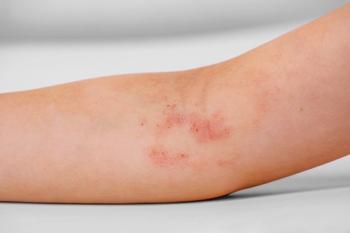
An analysis of gender differences in 4645 cases of pediatric and adolescent melanoma
At an SPD 2022 47th Annual Meeting poster session, researchers look at gender and age differences in pediatric patients with melanoma.
Researchers Sabrina Dahak, MS, University of Arizona College of Medicine in Phoenix; Jennifer M. Fernandez, MD, RD, University of Nebraska Medical Center, Omaha; Jenna E. Koblinski, MD, Emory University School of Medicine, Atlanta, Georgia; Clara Curiel-Lewandrowski, MD, University of Arizona, College of Medicine, in Tucson; and Rebecca Thiede, MD, University of Arizona College of Medicine, Tucson, evaluated gender differences in both presentation and survival of pediatric and adolescent patients with melanoma.
The investigators used a retrospective cohort study, conducted using the National Cancer Database to identify biopsy-confirmed invasive primary cutaneous melanoma cases diagnosed in patients aged 0 to 21 years, between 2004 and 2018. The study yielded 4645 cases.
The pediatric and adolescent age groups that were used are defined by the American Academy of Pediatrics: infant (birth to 2 years); childhood (3 to 10 years); early adolescence (11 to 14 years); middle adolescence (15 to 17 years); and late adolescence (18 to 21 years).
Of the 4645 pediatric melanoma cases studied, 63.4% were females and 36.6% were males. The researchers noted a significant relationship between primary site on body and gender. For example, for 34.3% of females and 32.9% of males, primary sites included trunk; for 16.4% of females and 30.09% of males, primary sites were head and neck; 19.5% of females and 16% of males exhibited melanoma on upper extremities, while 27.9% of females and 16.5% of males exhibited on the lower extremities.
Females had higher rates of superficial spreading melanoma, and males were more affected by nodular melanoma. Additionally, more females were likely to be diagnosed with stage 1 disease (67.8%) than males (53.6%).
The 5 and 10 year overall survival rates were higher for females (95.9% vs 93.9% respectively) than they were for males (92% vs 86.7%, respectively). The data ultimately showed that, although melanoma was less common in males than in females, males were more likely to have a higher stage at the time of diagnosis and OS rates, information that could be useful for the practitioner when creating a diagnosis and treatment plan for these populations.
Reference
Dahak S, Fernandez JM, Curiel-Lewandrowski C, Thiede R. An anaylsis of gender differences in 4645 cases of pediatric and adolesecent melanoma. SPD 2022 47th Annual Meeting. Poster presentation, July 7 and 8. Indianapolis, Indiana.
Newsletter
Access practical, evidence-based guidance to support better care for our youngest patients. Join our email list for the latest clinical updates.














